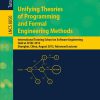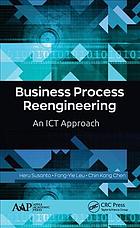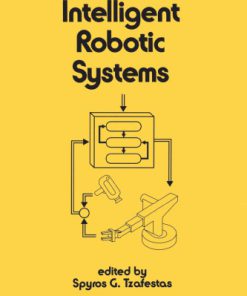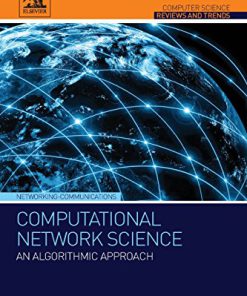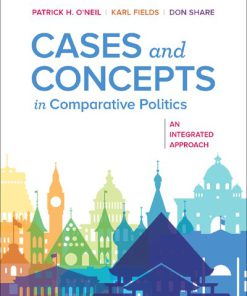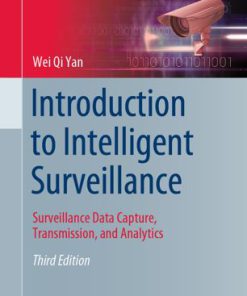Intelligent Video Surveillance Systems An Algorithmic Approach 1st Edition by Maheshkumar Kolekar ISBN 9781351649902 1351649906
$50.00 Original price was: $50.00.$25.00Current price is: $25.00.
Intelligent Video Surveillance Systems An Algorithmic Approach 1st Edition by Maheshkumar Kolekar – Ebook PDF Instant Download/Delivery: 9781351649902 ,1351649906
Full download Intelligent Video Surveillance Systems An Algorithmic Approach 1st Edition after payment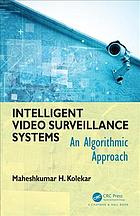
Product details:
ISBN 10: 1351649906
ISBN 13: 9781351649902
Author: Maheshkumar Kolekar
Intelligent Video Surveillance Systems An Algorithmic Approach 1st Edition Table of contents:
I Basics of Image and Video Processing
1. Basics of Image Processing
1.1 Introduction to Digital Image Processing
1.1.1 Why Digital Image Processing?
1.1.2 What Is Digital Image?
1.1.3 What Is Digital Image Processing?
1.2 Digital Image Processing System
1.2.1 Image Acquisition
1.2.2 Storage
1.2.3 Processing
1.2.4 Communication
1.2.5 Display
1.3 Digital Image Processing Methods
1.3.1 Image Enhancement
1.3.2 Image Restoration
1.3.3 Image Segmentation
1.3.4 Image Compression
1.3.5 Image Reconstruction
1.3.5.1 Analytical Reconstruction
1.3.5.2 Iterative Reconstruction
1.3.6 Image Morphing
1.3.7 Image Recognition
1.3.8 Image Mosaicing
1.3.9 Image Watermarking
1.3.10 Image Registration
1.4 Digital Image Segmentation
1.4.1 Classification of Image Segmentation Techniques
1.4.2 Edge Detection
1.4.2.1 Classification of Edges
1.4.2.2 Gradient Operator
1.4.2.3 Laplacian Operator
1.4.2.4 Marr Hildreth Edge Detector
1.4.2.5 Isolated Point Detection
1.4.2.6 Line Detection
1.4.2.7 Canny Edge Detector
1.4.3 Edge Linking
1.4.3.1 Local Processing
1.4.3.2 Regional Processing
1.4.3.3 Global Processing Using Hough Transform
1.4.4 Thresholding
1.4.4.1 Multiple Thresholding
1.4.4.2 Global Thresholding
1.4.4.3 Local Thresholding
1.4.5 Region Growing
1.4.6 Region Splitting and Merging
1.4.7 Watershed-Based Segmentation
1.4.7.1 Use of Markers
1.5 Applications
1.5.1 Television Signal Processing
1.5.2 Satellite Image Processing
1.5.3 Medical Image Processing
1.5.4 Robot Control
1.5.5 Visual Communications
1.5.6 Law Enforcement
1.6 Summary
2. Basics of Video Compression and Motion Analysis
2.1 Video Compression
2.1.1 What Is Video Compression?
2.1.2 Why Video Compression?
2.1.3 Types of Video Compression
2.1.3.1 Lossless
2.1.3.2 Lossy
2.1.4 Latency
2.1.5 MPEG Compression
2.1.5.1 Reduction of the Resolution
2.1.5.2 Motion Estimation
2.1.5.3 Discrete Cosine Transform
2.1.5.4 Quantization
2.1.5.5 Entropy Coding
2.1.6 Video Compression Standards
2.2 Motion Segmentation
2.2.1 Introduction
2.2.1.1 Issues in Motion Segmentations
2.2.1.2 Main Attributes of a Motion Segmentation Algorithm
2.2.2 Motion Segmentation Algorithms
2.2.2.1 Image Difference
2.2.2.2 Statistical Theory
2.2.2.3 Optical Flow
2.2.2.4 Layers
2.2.2.5 Factorization Technique
2.3 Optical Flow Methods
2.3.1 Estimation of Optical Flow
2.3.1.1 Horn-Schunck Optical Flow Estimation
2.3.1.2 Lucas Kanade Optical Flow Estimation
2.4 Applications
2.4.1 Surveillance and Security
2.4.2 Content-Based Video Indexing and Retrieval
2.4.3 Automatic Highlight Generation of Sports Videos
2.4.4 Traffic Monitoring
2.5 Summary
3. Background Modeling
3.1 What Is Background Modeling?
3.2 Background Modeling Techniques
3.2.1 Non-Statistical Background Modeling Methods
3.2.1.1 Background Modeling Independent of Time
3.2.1.2 Improved Basic Background Modeling
3.2.1.3 Long-Term Average Background Modeling
3.2.2 Statistical Background Modeling Methods
3.2.2.1 Example of GMM
3.2.2.2 GMM Model
3.2.2.3 Expectation Maximization GMM Algorithm
3.2.2.4 GMM-Based Background Detection
3.3 Shadow Detection and Removal
3.3.1 Shadow Removal for Traffic Flow Detection
3.4 Summary
Part II Object Tracking
4. Object Classification
4.1 Shape-Based Object Classification
4.2 Motion-Based Object Classification
4.2.1 Approaches
4.2.2 Applications
4.3 Viola Jones Object Detection Framework
4.3.1 Haar Features
4.3.2 Integral Image
4.3.3 AdaBoost Training
4.3.4 Cascading of Classifiers
4.3.5 Results and Discussion
4.4 Object Classification Using Convolutional Neural Networks
4.4.1 What Are Convolutional Neural Networks?
4.4.1.1 Convolution Stage
4.4.1.2 Non-Linear Activation Stage
4.4.1.3 Pooling Stage
4.4.2 Convolutional Neural Network Models
4.4.2.1 Two-Layer Convolutional Neural Network
4.4.2.2 Three-Layer Convolutional Neural Network
4.4.2.3 Intuition for Using Deep Neural Networks
4.4.3 Results and Discussion
4.4.3.1 Experimental Datasets
4.4.3.2 Results and Discussion
4.5 Object Classification Using Regional Convolutional Neural Networks
4.5.1 Steps of RCNN Algorithm
4.5.2 Results and Discussion
4.6 Summary
5. Human Activity Recognition
5.1 Motion History Image-Based Human Activity Recognition
5.1.1 Motion History Image
5.1.2 Hu Moments
5.1.2.1 Hu’s Invariant Moments
5.1.3 Human Activity Recgnition
5.1.3.1 Classification Using Hu Moments
5.1.3.2 Projection and Displacement Features
5.1.3.3 Experimental Discussion
5.2 Hidden Markov Models
5.2.1 Markov Models
5.2.2 Hidden Markov Models
5.2.2.1 Final State
5.2.3 The Three Fundamental Problems of HMM
5.2.3.1 Likelihood Evaluation
5.2.3.2 State Sequence Decoding
5.2.3.3 HMM Parameter Estimation
5.2.4 Limitations of Hidden Markov Models
5.3 HMM-Based Activity Recognition
5.3.1 Shape-Based Features
5.3.1.1 Discrete Fourier Transform
5.3.1.2 Principal Component Analysis
5.3.1.3 K means Clustering
5.3.2 Optical Flow-Based Features
5.3.2.1 Lucas Kanade Optical Flow Method
5.3.2.2 Optical Features
5.3.3 Implementation and Results
5.4 Dynamic Time Warping-Based Activity Recognition
5.4.1 What Is Dynamic Time Warping?
5.4.2 Implementation
5.5 Abnormal Activity Recognition
5.6 Challenges of Intelligent Human Activity Recognition
5.7 Summary
6. Video Object Tracking
6.1 Introduction
6.1.1 What Is Video Object Tracking?
6.1.2 Tracking Challenges
6.1.3 Steps of Video Object Tracking System
6.1.3.1 Background Identification
6.1.3.2 Foreground Object Detection
6.1.3.3 Object Labeling
6.1.3.4 Handling the Occlusion Problem
6.2 Kalman Filter
6.2.1 What Is a Kalman Filter?
6.2.2 How Does a Kalman Filter Work?
6.2.3 Kalman Filter Cycle
6.2.4 Basic Theory of Kalman Filter
6.2.4.1 Prediction Equations
6.2.4.2 Update Equations
6.2.4.3 Measurement Equations
6.2.5 Implementation
6.3 Region-Based Tracking
6.4 Contour-Based Tracking
6.5 Feature-Based Tracking
6.5.1 Feature-Based Tracking Algorithm
6.5.1.1 Feature Selection
6.5.1.2 Sum-of-Squared-Difference Criterion
6.5.1.3 Pyramidal Decomposition
6.6 Model-Based Tracking
6.7 KLT Tracker
6.7.1 Limitations of the KLT Tracker
6.8 Mean-Shift-Based Tracking
6.8.1 What Is Mean Shift?
6.8.2 Algorithm
6.8.3 Advantages
6.8.4 Disadvantages
6.9 Applications of Tracking Algorithms
6.9.1 Trajectory-Based Unusual Human Movement Recognition
6.9.1.1 Closed Path Detection
6.9.1.2 Spiral Path Detection
6.10 Summary
Part III Surveillance Systems
7. Camera Network for Surveillance
7.1 Types of CCTV Cameras
7.1.1 Bullet Camera
7.1.2 Dome Camera
7.1.3 Desktop Cameras
7.1.4 Vari-Focal Camera
7.1.5 IP Camera
7.1.6 Wireless Camera
7.1.7 PTZ Camera
7.1.8 Infrared Cameras
7.1.9 Day Night Cameras
7.1.10 High-Definition Cameras
7.2 Smart Cameras
7.2.1 What Is a Smart Camera?
7.2.2 Components of Smart Cameras
7.2.3 Why Do We Need a Smart Camera?
7.2.4 Features
7.3 Smart Imagers
7.3.1 What Is an Imager?
7.3.2 Types of Imagers
7.3.2.1 CCD Imager
7.3.2.2 Complementary Metal Oxide Semiconductor
7.4 Multiple View Geometry
7.5 Camera Network
7.5.1 What Is Camera Networking?
7.5.2 Camera Devices
7.6 Camera Calibration
7.7 Camera Placement
7.7.1 Camera Placement Algorithm for Region with Obstacles
7.8 Camera Communication
7.9 Multiple Camera Coordination and Cooperation
7.10 Summary
8. Surveillance Systems and Applications
8.1 Introduction
8.1.1 Components of Video Surveillance Systems
8.2 Video Content Analytics
8.2.1 Functionalities
8.2.2 Commercial Applications
8.2.3 Video Object Tracking
8.3 Baggage Exchange Detection
8.3.1 Object Detection Using GMM
8.3.1.1 Background Subtraction
8.3.1.2 Gaussian Mixture Model
8.3.2 Tracking Using a Kalman Filter
8.3.3 Labelling of Different Objects
8.3.4 Identification of Baggage and Person
8.3.5 Warning System in Case of Exchange
8.3.6 Results
8.4 Fence-Crossing Detection
8.4.1 Proposed Fence-Crossing Detection System
8.4.1.1 Foreground Extraction
8.4.1.2 Feature Extraction and Selection
8.4.1.3 SVM Classifier
8.4.2 Experimental Results
8.5 Military Applications
8.5.1 The Need for Automation
8.5.2 Basic Design of Surveillance Systems
8.6 Transportation
8.6.1 Road Transportation
8.6.2 Rail Transportation
8.6.3 Maritime Transportation
8.6.3.1 Challenges in Maritime Transportation
8.7 Summary
Bibliography
Index
People also search for Intelligent Video Surveillance Systems An Algorithmic Approach 1st Edition:
intelligent video surveillance systems pdf
intelligent video surveillance systems and technology
intelligent video surveillance systems an algorithmic approach
intelligent network video understanding modern video surveillance systems
Tags:
Maheshkumar Kolekar,Intelligent,Video Surveillance,Systems,Algorithmic Approach
You may also like…
Relationships & Lifestyle - Psychological Self-Help
Abnormal Psychology An Integrative Approach 8th Edition David 9798214336787
Computers - Programming
Business process reengineering: an ICT approach First Edition Chen
Computers - Networking
Computational Network Science An Algorithmic Approach 1st Edition Hexmoor
Computers - Computer Science
Fault Tolerant Message Passing Distributed Systems An Algorithmic Approach Michel Raynal
Politics & Philosophy - Social Sciences
Cases and Concepts in Comparative Politics An Integrated Approach First Edition Patrick H. O’Neil
Computers - Hardware
Intelligent Image and Video Compression: Communicating Pictures 2nd Edition David Bull
Computers - Computer Science


